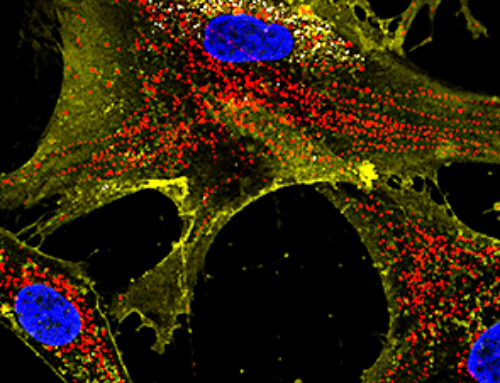Coronavirus tests performed in labs are the gold standard for accuracy and antigen tests are a fast and inexpensive alternative.
But backers of a third type of test, developed by a Nobel Prize winner using cutting-edge CRISPR technology, say it has the potential to be all three: rapid, accurate and inexpensive.
Although these gene-editing technology tests are still being developed and won't be ready in the United States this year as the weather cools and demand surges, research groups recently published scientific papers describing them as an appealing alternative as testing shortages persist in the COVID-19 pandemic.
Dr. Jennifer Doudna, a University of California, Berkeley researcher whose pioneering work in CRISPR earned a share of this year's Nobel Prize in chemistry, said the test can be done quickly and doesn't require a lab.
"We have a ways to go before CRISPR-based diagnostics reach widespread use, but I believe we'll see an impact during the current pandemic," Doudna said. "Because it is simple to adjust these tests to detect other targets, the platform we're developing now is laying the groundwork to deploy CRISPR for rapid diagnosis during future outbreaks."
CRISPR, or clustered regularly interspaced short palindromic repeats, is a gene-editing technology studied for a wide range of uses from cancer and sickle cell disease treatments to improved food production.
In 2016, Doudna's lab developed a way to detect RNA using the technology. Her lab collaborated with Dr. Melanie Ott of San Francisco-based Gladstone Institutes to develop an HIV test, but when the pandemic hit, the researchers focused on developing a coronavirus test.
The test recognizes a sequence of RNA in SARS-CoV-2, the coronavirus that causes COVID-19
In an Oct. 12 publication, researchers reported the test yielded results in five minutes and correctly identified five samples from patients with coronavirus. When used with a mobile phone to detect signals generated by the test, the technology could provide a fast, low-cost test outside a laboratory, researchers said in the paper, which was not peer reviewed.
Massachusetts Institute of Technology scientists also are honing a CRISPR-based test that can be used outside a lab. In a New England Journal of Medicine letter published last month, researchers said the test was evaluated at a University of Washington lab using 202 samples with coronavirus and 200 without. The test correctly identified 93.1% of positive samples. The test also had 98.5% specificity, which means it rarely reported false positives.
Feluda, a paper-based CRISPR test named after a fictional India detective, has been cleared by that nation's drug regulators for commercial launch. But it's unclear how the Indian conglomerate Tata Group plans to deploy the test in India, which trails only the United States with nearly 7.7 million cases, according to data from Johns Hopkins University.
Image Credit: Ernesto Del Aguila, NHGRI
Post by Amanda Scott, NA CEO. Follow her on twitter @tantriclens
Thanks to Heinz V. Hoenen. Follow him on twitter: @HeinzVHoenen
News
Novel mRNA therapy curbs antibiotic-resistant infections in preclinical lung models
Researchers at the Icahn School of Medicine at Mount Sinai and collaborators have reported early success with a novel mRNA-based therapy designed to combat antibiotic-resistant bacteria. The findings, published in Nature Biotechnology, show that in [...]
New skin-permeable polymer delivers insulin without needles
A breakthrough zwitterionic polymer slips through the skin’s toughest barriers, carrying insulin deep into tissue and normalizing blood sugar, offering patients a painless alternative to daily injections. A recent study published in the journal Nature examines [...]
Multifunctional Nanogels: A Breakthrough in Antibacterial Strategies
Antibiotic resistance is a growing concern - from human health to crop survival. A new study successfully uses nanogels to target and almost entirely inhibit the bacteria P. Aeruginosa. Recently published in Angewandte Chemie, the study [...]
Nanoflowers rejuvenate old and damaged human cells by replacing their mitochondria
Biomedical researchers at Texas A&M University may have discovered a way to stop or even reverse the decline of cellular energy production—a finding that could have revolutionary effects across medicine. Dr. Akhilesh K. Gaharwar [...]
The Stunning New Push to Protect the Invisible 99% of Life
Scientists worldwide have joined forces to build the first-ever roadmap for conserving Earth’s vast invisible majority—microbes. Their new IUCN Specialist Group reframes conservation by elevating microbial life to the same urgency as plants and [...]
Scientists Find a Way to Help the Brain Clear Alzheimer’s Plaques Naturally
Scientists have discovered that the brain may have a built-in way to fight Alzheimer’s. By activating a protein called Sox9, researchers were able to switch on star-shaped brain cells known as astrocytes and turn them into [...]
Vision can be rebooted in adults with amblyopia, study suggests
Temporarily anesthetizing the retina briefly reverts the activity of the visual system to that observed in early development and enables growth of responses to the amblyopic eye, new research shows. In the common vision [...]
Ultrasound-activated Nanoparticles Kill Liver Cancer and Activate Immune System
A new ultrasound-guided nanotherapy wipes out liver tumors while training the immune system to keep them from coming back. The study, published in Nano Today, introduces a biodegradable nanoparticle system that combines sonodynamic therapy and cell [...]
Magnetic nanoparticles that successfully navigate complex blood vessels may be ready for clinical trials
Every year, 12 million people worldwide suffer a stroke; many die or are permanently impaired. Currently, drugs are administered to dissolve the thrombus that blocks the blood vessel. These drugs spread throughout the entire [...]
Reviving Exhausted T Cells Sparks Powerful Cancer Tumor Elimination
Scientists have discovered how tumors secretly drain the energy from T cells—the immune system’s main cancer fighters—and how blocking that process can bring them back to life. The team found that cancer cells use [...]
Very low LDL-cholesterol correlates to fewer heart problems after stroke
Brigham and Women's Hospital's TIMI Study Group reports that in patients with prior ischemic stroke, very low achieved LDL-cholesterol correlated with fewer major adverse cardiovascular events and fewer recurrent strokes, without an apparent increase [...]
“Great Unified Microscope” Reveals Hidden Micro and Nano Worlds Inside Living Cells
University of Tokyo researchers have created a powerful new microscope that captures both forward- and back-scattered light at once, letting scientists see everything from large cell structures to tiny nanoscale particles in a single shot. Researchers [...]
Breakthrough Alzheimer’s Drug Has a Hidden Problem
Researchers in Japan found that although the Alzheimer’s drug lecanemab successfully removes amyloid plaques from the brain, it does not restore the brain’s waste-clearing system within the first few months of treatment. The study suggests that [...]
Concerning New Research Reveals Colon Cancer Is Skyrocketing in Adults Under 50
Colorectal cancer is striking younger adults at alarming rates, driven by lifestyle and genetic factors. Colorectal cancer (CRC) develops when abnormal cells grow uncontrollably in the colon or rectum, forming tumors that can eventually [...]
Scientists Discover a Natural, Non-Addictive Way To Block Pain That Could Replace Opioids
Scientists have discovered that the body can naturally dull pain through its own localized “benzodiazepine-like” peptides. A groundbreaking study led by a University of Leeds scientist has unveiled new insights into how the body manages pain, [...]
GLP-1 Drugs Like Ozempic Work, but New Research Reveals a Major Catch
Three new Cochrane reviews find evidence that GLP-1 drugs lead to clinically meaningful weight loss, though industry-funded studies raise concerns. Three new reviews from Cochrane have found that GLP-1 medications can lead to significant [...]





















